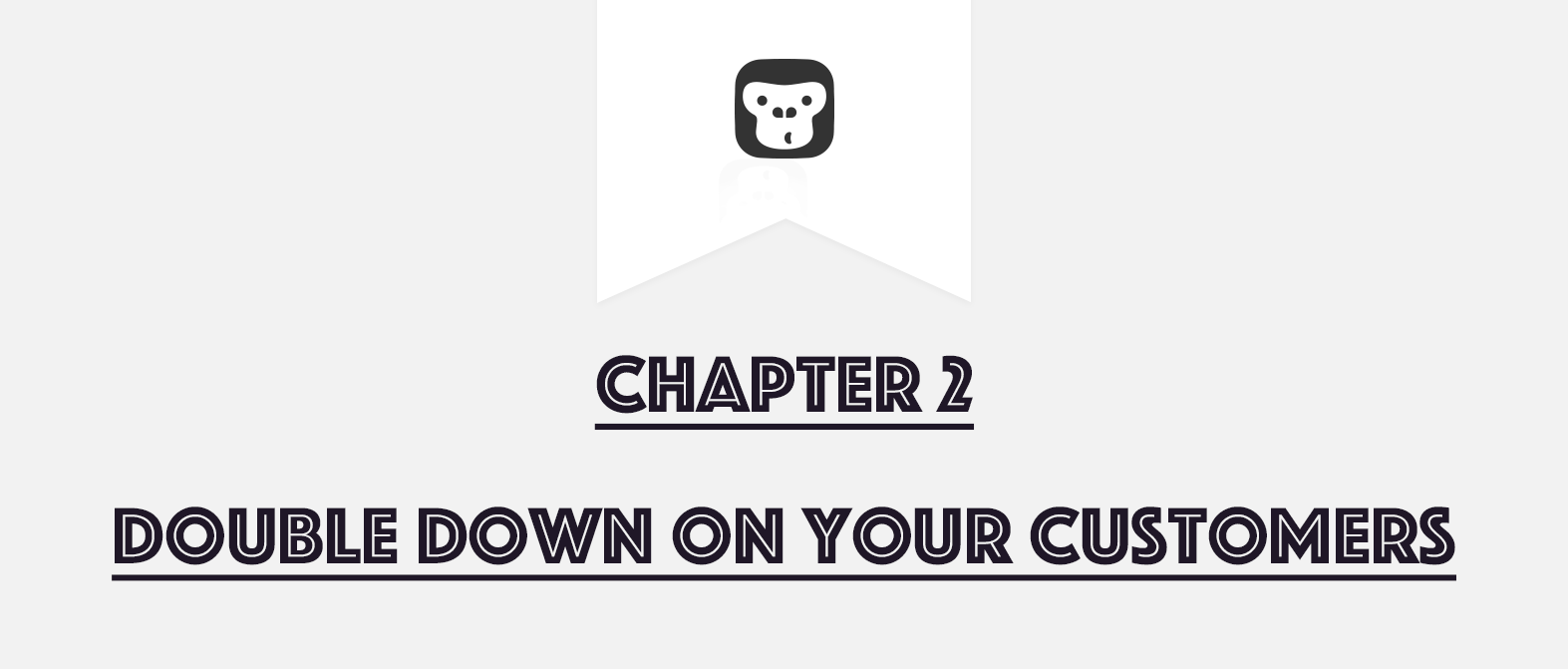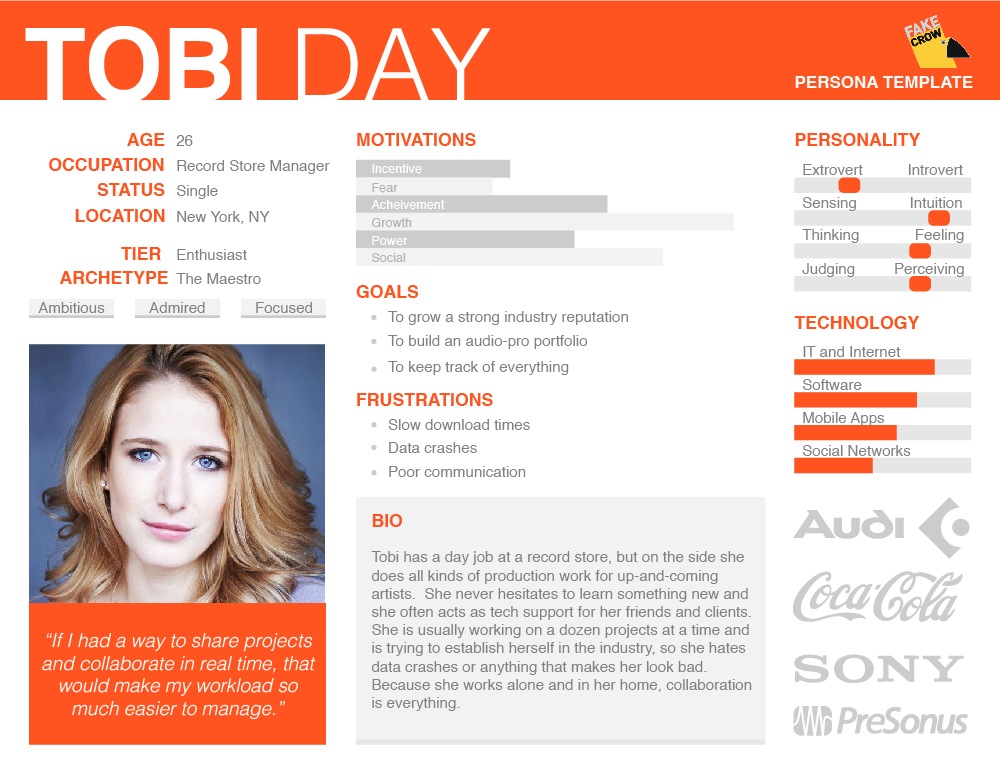Double Down on Your Customers
Chapter 2

- Get overwhelmed with information overload – who can I trust?
- Fall victim to paralysis by analysis – where do I start?
Trust me, I’ve been there before.
Luckily, there is a simple solution to this problem.
It’s the very FIRST step you should take before embarking on your marketing journey.
Focus on your customers.
It doesn’t matter if you’re just starting out, filling the gaps in your schedule, or growing your small business….
You need to need to talk to your customers and create job stories to capture their situations, motivations, and desired outcomes.
If you do these two things, you can use your newfound knowledge to market your product better, create useful and relevant content for your target audience, and write copy that makes them feel like you’re reading their mind.
Conversely, if you skip ahead to the chapters on branding, conversion funnels, or traffic sources, you’ll end up wasting your company’s two most valuable resources:
Time and money.
So grab your preferred caffeine crush (ours is an ice-cold Monster Lo-Carb) and learn how to double down on your customers before your competition does…
Know Thy Customer
In case you skimmed over the above paragraph (I get it, you’re excited), I’ll repeat:
Marketing starts and ends with your customers.
Think about these questions:
- Who are the people booking your service?
- What problem would they like you to solve?
- What solutions are they considering and what have they tried in the past?
- And most importantly, what will it take to win their business?
Better yet, ask your customers these questions when (a) they first schedule an appointment with you or (b) refer a friend of theirs to your company.
I’ll bet that their answers will have little to nothing to do with HOW they found out about your business.
In fact, I’ll double down on my bet (I’m feeling lucky, I know) and say that they’ll tell you how your company solved some of their most pressing problems…
And more importantly, how THAT made them feel.
You see, while the marketing landscape continues to change, this core principle remains the same:
Marketing is about selling creating connections with your customers.
Why? Because at the end of the day, it doesn’t matter whether you’re running pay-per-click ads, email marketing campaigns, or retargeting customers on Facebook.
What matters is that you give your prospects and customers a better experience, which is where talking to your customers comes in play.
When you deliver incredible experiences to your customers, they spend more time with you, buy more from you (fingers cross), and tell their friends about your business.
Inevitably, this means that the best marketing channel for your business is the one that helps you achieve this goal.
That said, instead of guessing what an incredible experience looks like, why not…
Start with Why
While it’s clear that you should be talking to your customers to try and understand their needs, it’s not so obvious what the best way to do that is.
Most marketing material will have you believe that you need to create personas to understand your customers.
But the truth is this approach is outdated.
To prove my point, take a look at the basic elements of a persona:
- Persona group.
- Fictional name.
- Job titles and responsibilities.
- Demographics such as age, education, and relationship status.
- Motivations, goals, and frustrations as it relates to your company.
- Their personal, social, and technological environment.
- A quote that sums up what matters most to the persona.
- Casual pictures representing the user group.

I think not.
Last time I checked, everyone hates when they lose their data.
You see, creating personas for each of your customers leads you to believe that people are special snowflakes, with unique goals.
But what I have found out is the similarities are far more significant than the differences.
Let’s use GorillaDesk as an example…
The motivations behind a married father of three living in the United States running a Lawn Care business and a young Vietnamese woman just starting her Carpet Cleaning company are the same.
Their goals and attributes look different, but their motivations are the same.
Help us save time, make more money, and work smarter. Please.
See where I’m going with this?
Personas focus on attributes, meaning you artificially segment your audience. While this is great for building empathy, it doesn’t help you create connections with your customers.
So you must be wondering, what should I do then?
Glad you asked. You must focus on your audience’s motivations and desired outcomes, which is where job stories come in.
While personas focus on roles and attributes, job stories focus on situations and motivations.
Here’s an example…
When I find cockroaches in my kitchen, I want to get rid of them as soon as possible, so that my friends don’t think I have a pest problem.
This information will allow you to connect with your customers on a deeper-level across ALL marketing channels.
Remember, personas explain who people are and what people do. Good in theory, but it never fully explains WHY people do something.
Knowing WHY people do something, like book a pest control treatment, is far more valuable to your business.
These nuggets of information (situations, motivations, and desired outcomes) will help you create marketing messages, sales pitches, and value-propositions that resonate with your target audience.
Here’s a Facebook Ad I quickly put together for the above job story…

Can you spot the difference from the hundreds of pest control ads out there?
THIS is how you win the marketing war.
You leverage your customers’ situations, motivations, and desired outcomes to help you create marketing messages, sales pitches, and value-propositions that strike an emotional chord and hit close to home.
When ____’ identifies the situation, ‘I want to ____’ identifies the motivation, and ‘So that I can ____’ identifies the outcome.
Keep in mind that you want to be as realistic as possible.
Meaning you’ll want to use the customer stories you hear over-and-over again as your starting point.
Failure to do so will lead to marketing messages that slip through the cracks.
Up Next…
3. The Importance Of Branding
Ready to Get Started?
Get all our amazing features and top-rated support, with no credit card required.
